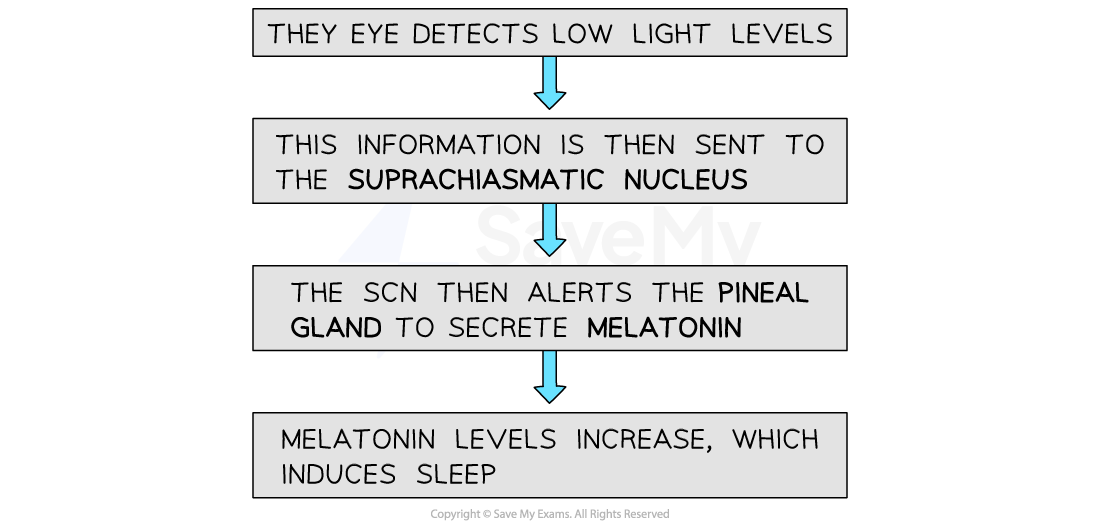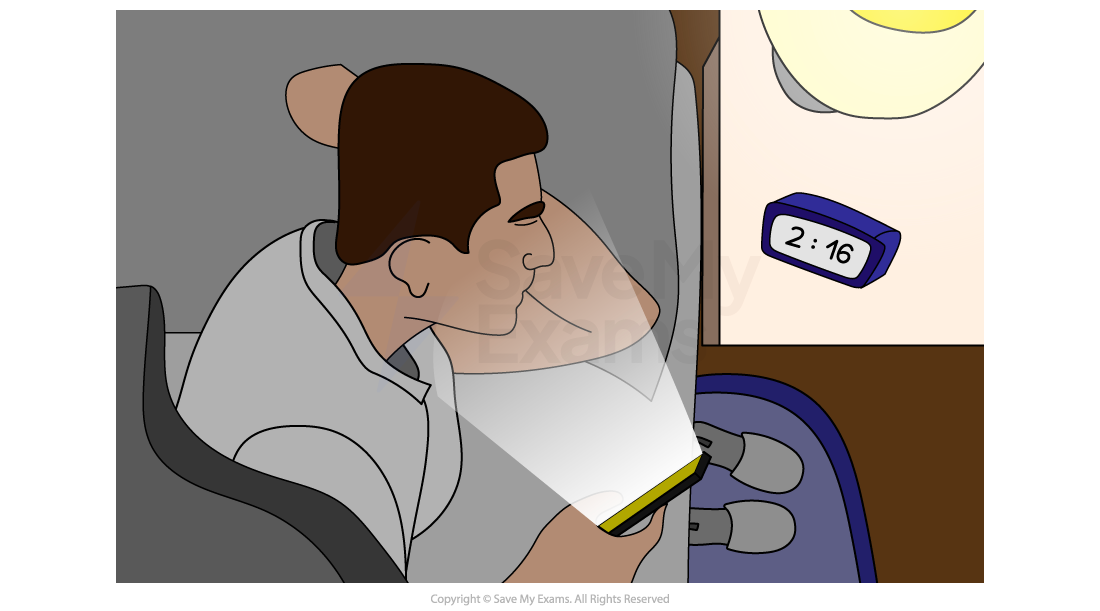Endogenous Pacemakers
- The rhythms of our body are regulated by two key factors - endogenous pacemakers and exogenous zeitgebers
- Endogenous pacemakers are the internal mechanisms which determine the biological rhythms of the body
- For example, the circadian sleep cycle
- They are known as the internal ‘body clocks’ but, they can be affected by the external environment
- For example, changes in light
- The suprachiasmatic nucleus is a major factor in the sleep/wake cycle - it is the most important endogenous pacemaker
- It is the body’s ‘home-made’ method for inducing sleep
- Specific biological triggers are involved which result in someone falling asleep

The stages of sleep: an example of an ultradian rhythm
- Light issues the first signal to begin the sleep cycle
- Siffre’s (1973) ‘caveman’ study demonstrates that humans tend to fall into, roughly, a 24-hour sleep-wake cycle (his own cycle was measured as 25 hours)
- His findings are evidence of an internal biological ‘clock’ determining the sleep-wake cycle



